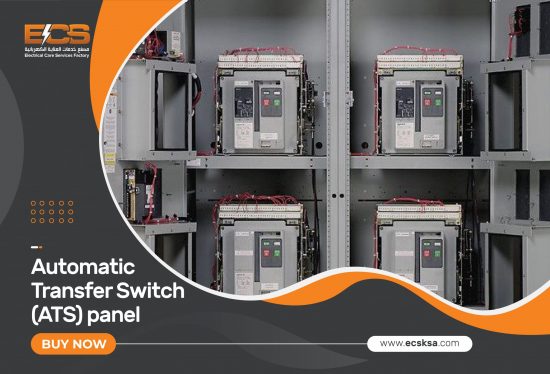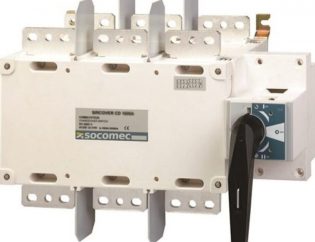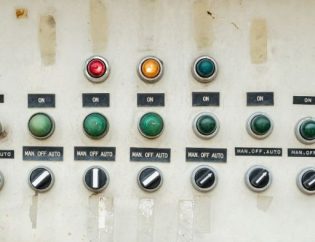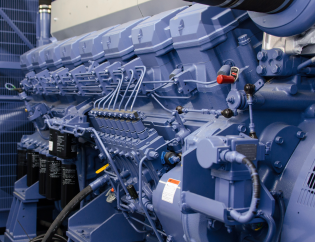How Does Automatic Transfer Switch ATS Panel Work?
An Automatic Transfer Switch for generator works by constantly monitoring the primary power source and the secondary power source. The ATS panel is connected to both the primary and secondary power sources and has sensors that detect the voltage and frequency of the incoming power.
When the ATS panel detects that the primary power source has failed or become unavailable, it sends a signal to switch the load to the secondary power source. This is typically done through the use of relays or contactors, which are electrical switches that are activated by an electrical current. The contactors or relays switch the load from the primary power source to the secondary power source, ensuring that the load remains powered at all times.
In addition to switching the load, the ATS panel also monitors the load and the secondary power source to ensure that they are functioning properly. If the secondary power source fails or becomes unavailable, the ATS panel will send an alarm or signal indicating that there is a problem.
Overall, the ATS panel works by constantly monitoring the primary and secondary power sources, switching the load to the secondary source when the primary source fails, and monitoring the load and secondary source to ensure that they are functioning properly.
What Are the Advantages/Disadvantages of an Automatic Transfer Switch for Generator?
An automatic transfer switch (ATS) is a device that automatically switches the power source for a building or facility from the utility grid to a backup generator during a power outage. The ATS has several advantages, including providing a reliable power source during outages, reducing business downtime, and protecting sensitive equipment from power surges. Additionally, an ATS can be programmed to start the generator at specific times or when the power goes out, which helps conserve fuel and prolong the generator’s life. However, an ATS also has some disadvantages, including the cost of installation and maintenance, the need for regular testing to ensure proper operation, and the potential for mechanical failure.
Invest in an automatic transfer switch for your generator today and ensure a seamless transition to backup power during an outage. Contact us now to learn more and receive a free consultation.
Advantages of an Automatic Transfer Switch (ATS)
- Reliability: The ATS panel provides a reliable and seamless way to switch between power sources, ensuring that the load remains powered at all times, particularly in critical applications such as hospitals and data centers.
- Equipment protection: An ATS panel can help prevent equipment damage by switching power sources before the primary power source fails.
- Increased uptime: With an ATS panel, the load is automatically switched to a secondary power source in the event of a power failure, minimizing downtime and increasing overall uptime.
- Cost-effective: ATS panel can save money by avoiding costly equipment damage, downtime, and interruption of critical services.
Disadvantages of an Automatic Transfer Switch (ATS)
- Cost: The cost of an ATS panel, as well as the cost of installation and maintenance, can be high.
- Limited backup power: If the secondary power source fails, there may be an interruption in power to the load, which can be a disadvantage in critical systems.
- Complexity: ATS panel can be complex and require specialized knowledge to install and maintain, which can add to the overall cost of ownership.
- Limited redundancy: Some systems may require multiple ATS and generator backup power, which can be expensive and complex.
How Does a Contactor Based ATS Panel Work?
A contactor-based Automatic Transfer Switch (ATS) panel works by using electrical contactors to switch the power source from the utility grid to a backup generator during a power outage. The ATS panel monitors the utility power and, upon detecting a power outage, sends a signal to the contactors to switch the power source to the generator.
The contactors are electromechanical devices that use an electrical current to open and close electrical circuits. When the ATS panel sends the signal to switch to generator power, the contactors close the circuit to the generator and open the circuit to the utility power. This allows the generator to power the facility while the utility power is out.
When the utility power is restored, the ATS panel sends another signal to the contactors, causing them to open the circuit to the generator and close the circuit to the utility power. This switches the power source back to the utility grid and shut downs the generator.
Importantly, the contractors are typically controlled by relays or other electronic devices, which analyse the power status and provide the right signal to the contactors, ensuring a safe and reliable switchover.
Protect your business from power outages with our top-of-the-line automatic transfer switches. Don’t wait for the next power outage to hit – upgrade your facility today and experience the peace of mind that comes with knowing you have a reliable backup power source. Contact us now to learn more and get a free quote.
Do you have a question in your mind? If so, make sure to fill out the form below!






